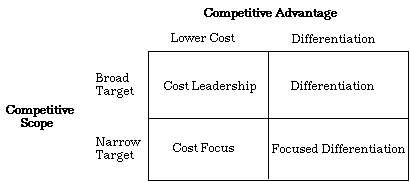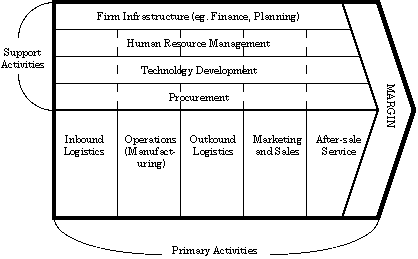Discussion point: Provide some examples of ways in which information and communications technology (ICT) impacts each of the five forces.

Discussion point: Provide some examples of ways in which information and communications technology (ICT) impacts each of the five forces. |
 |
 |
Discussion point: Provide some examples of ways in which ICT management practices are consistent with these two strategies. |
How does the support activity of technology development link with the primary value-adding activities and the other support activities?
|
 |